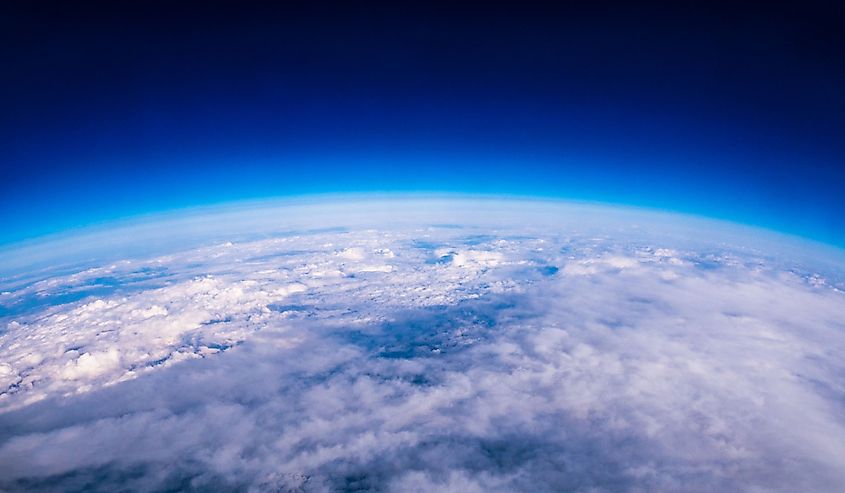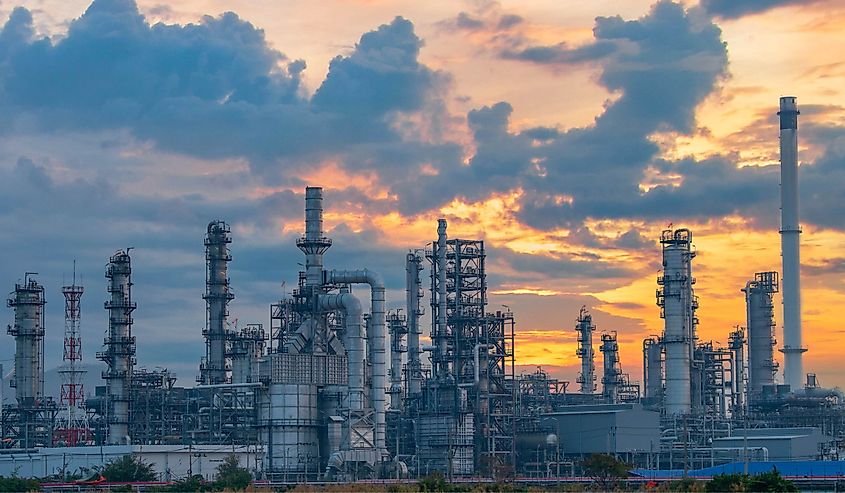
What Is the Atmosphere?
Exploring Earth’s atmosphere has always been essential to scientists’ understanding of the environment and its impact on life. Atmospheric discovery can be traced back to ancient civilizations that observed strange weather patterns, planet and star movements, and natural phenomena. The curiosity of these civilizations helped them gain insight into the air surrounding them. However, the first significant breakthrough in atmospheric understanding happened during the Age of Enlightenment. During this time, Galileo Galilei turned his telescope towards the sky and Evangelista Torricelli invented the mercury barometer. Their groundbreaking work allowed scientists to measure air pressure eventually. It also led them to discover the relationship between altitude and atmospheric conditions.
As technology improved, scientists continued studying Earth’s atmospheric composition and behavior. Using weather balloons, airplanes, and satellites, researchers could collect data from almost any location or altitude. Today, we know the atmosphere is a layered cloak of gases that envelopes Earth. It is not just the air we breathe, but a shield protecting us all from radiation. This cloak also regulates temperatures and plays a pivotal role in the never-ending water cycle.
Evolution Of The Atmosphere

Over nearly 4 billion years, the atmosphere underwent several changes. Its evolution saw it transition from being dominated by volcanic emissions to being rich in oxygen and suitable to sustain life. Several factors played a role in this transformation, including geological changes, biological evolution, and cosmic events.
Composition Of The Atmosphere

The atmosphere consists of gases and particles; it is primarily made up of nitrogen (78%) and oxygen (21%). The remaining 1% is filled with argon, carbon dioxide, and other trace gases. In addition to this, the atmosphere contains water vapor, dust particles, and pollutants.
Furthermore, the atmosphere is responsible for water vapor, which is crucial to sustaining life. Water vapor contributes to the greenhouse effect, aiding in regulating temperatures on Earth. It is also the primary element in cloud formation and rain.
Layers Of The Atmosphere

The atmosphere’s layers are divided according to temperature and altitude. These layers, starting from the Earth’s surface upwards, are as follows:
Troposphere: Extending up to 12 km from the Earth’s surface, the troposphere contains the air we breathe. Almost all weather patterns form here. Temperatures decrease as altitude increases.
Stratosphere: This contains the ozone layer, which soaks up and scatters solar ultraviolet radiation. The temperature rises with increasing altitude because of the absorption of UV rays. The stratosphere stretches from the troposphere to about 50 km. Airplanes typically cruise in the lower stratosphere because of the stable conditions found here.
Mesosphere: This is the coldest layer, and also the point where meteors burn up when they enter the atmosphere. The mesosphere extends to around 85 km.
Thermosphere: This layer is home to the ionosphere. The ionosphere plays a critical role in radio wave propagation. Ranging from 85 km to almost 600 km, temperatures here soar to 2,500 degrees Celsius or higher. Yet, if you were to be inside the thermosphere, you would feel cold because of the low air density. The thermosphere is also the layer in which the northern lights occur.
Exosphere: The exosphere is the gateway to outer space, where the Earth’s atmosphere gradually fades into nothingness.
Importance Of The Atmosphere

The atmosphere is the cornerstone of life on Earth. It acts as a barrier protecting the planet from UV radiation. In particular, the ozone layer in the stratosphere is vital in absorbing a large portion of these rays.
Furthermore, the greenhouse effect traps heat within the atmosphere. This process ensures that we have suitable temperatures to live in. The atmosphere also provides oxygen for respiration and carbon dioxide for photosynthesis. The highly delicate balance between the two is what sustains life. While plants produce oxygen, the composition of the atmosphere ensures a steady supply for all aerobic organisms.
Moreover, the atmosphere is the hub in which clouds, rain, and storms form. Atmospheric pressure influences weather and determines wind patterns. The constant movement of air from high to low-pressure zones creates breezes, winds, and gales on a global scale.
Human Impact On The Atmosphere

Industrial processes, transportation, and other human activities emit massive amounts of pollutants and greenhouse gases into the atmosphere, This has led to ongoing concerns about air pollution and global warming. In addition, chemicals like CFCs (chlorofluorocarbons) have caused the thinning of the ozone layer and a seasonal gaping hole. While efforts, including the Montreal Protocol, remain in place to reduce CFC emissions, the consequences of unabated CFC use still linger.
Conclusion
The rapid pace of industrialization and considerable advances in technology during the last few centuries have impacted the atmosphere negatively. As stewards of the only habitable planet, it’s our job to recognize the significance of the atmosphere’s role in supporting life. It is also crucial for all of us to do our part in reducing the impact our activities have on the atmosphere. In doing so, we will help maintain global ecosystems for generations.











